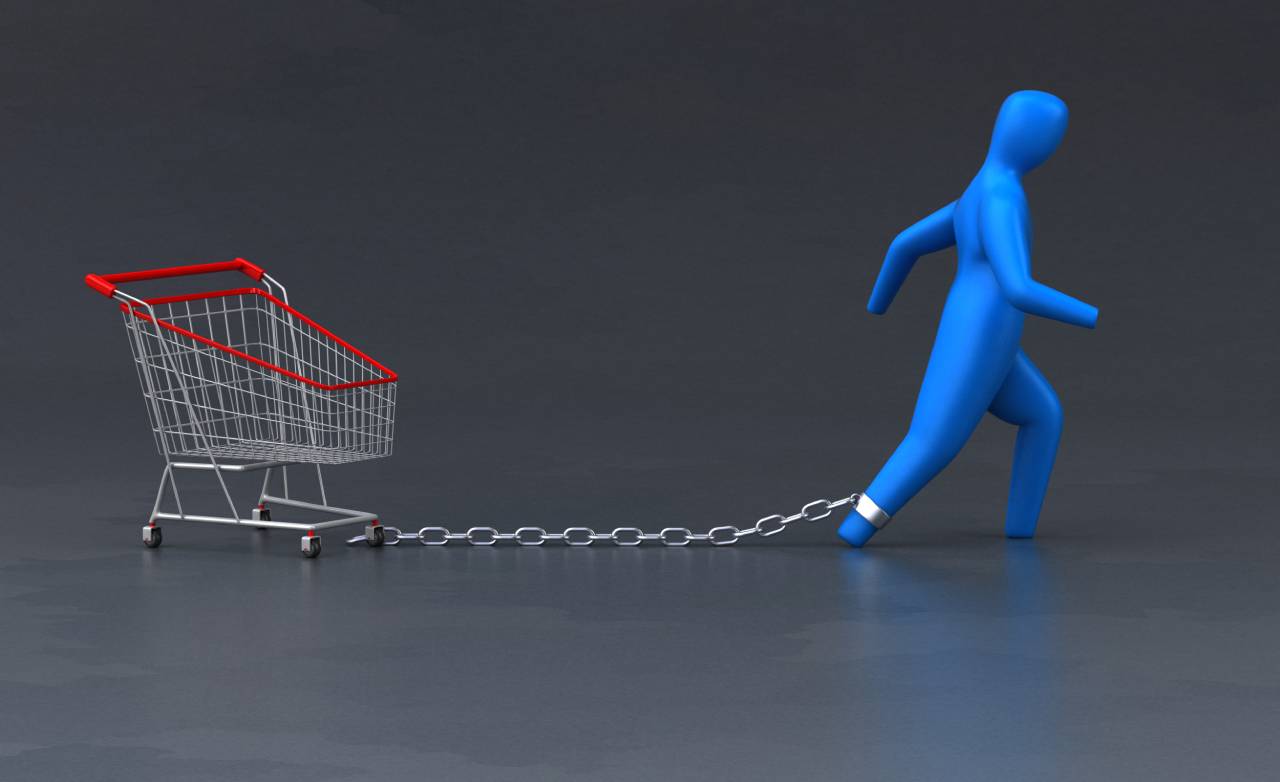Retaining customers is often more vital than acquiring new ones. Studies reveal that increasing retention rates by just 5% can boost profits by 25% to 95%.
This impressive statistic underscores the undeniable importance of customer retention in the ecommerce landscape.
Retaining an existing customer costs significantly less than attracting a new one. Businesses need to recognize the value of investing resources into nurturing relationships with their current customers.
This article delves into the significance of customer retention in ecommerce. We will explore key insights and practical strategies to enhance retention efforts.
Join us as we uncover valuable techniques that can help your ecommerce business thrive.
Table of Contents
The Importance of Customer Retention in Ecommerce
Customer retention is crucial for eCommerce businesses. Retained customers are more likely to make repeat purchases. This helps increase overall business growth.
A focus on customer retention boosts profits significantly. Retaining customers enhances relationships and customer satisfaction.
Cost-efficiency of retaining existing customers
Retaining customers is cheaper than acquiring new ones. It costs up to six times less. Increasing retention by 5% boosts profit over 25%.
Focusing on retention saves on marketing budget. Email and social media can be powerful tools. Higher retention improves profitability per customer. It increases the customer lifetime value.
There’s no rise in customer acquisition costs. Loyal customers often spend more on each purchase. A strong retention strategy is, therefore, cost-effective.
Comparison of acquisition versus retention costs
Acquisition costs have risen by 222% since 2013. Retention offers a more affordable strategy. Focus on existing customers can increase revenue by 95%.
A low Customer Lifetime Value highlights the need for retention. Retention metrics often require detailed analysis.
| Strategy | Cost-Effectiveness | Profit Impact |
|---|---|---|
| Customer Retention | Higher | 25%-95% Increase |
| Customer Acquisition | Lower | Strain over time |
| Summary: Retention | More Profitable | Greater Long-term impact |
Understanding these figures helps in making informed business decisions. Prioritize retention for lasting success. Take time to analyze and adjust strategies. This ensures a loyal, profitable customer base.
Key Metrics for Measuring Customer Retention
Understanding key metrics is crucial for eCommerce success. These metrics help assess retention efforts’ effectiveness.
They offer insights into customer loyalty and satisfaction. Let’s explore some essential metrics to track.
Customer retention rate
Customer retention rate is a vital KPI. It shows the percentage of returning customers. A 5% retention boost can increase profits by 25%.
Retaining a customer is also six times cheaper than acquiring one. eCommerce businesses should prioritize loyalty over acquisition.
Churn rate
Churn rate indicates the customers lost over time. A low churn rate signifies satisfied customers. High churn suggests there’s room for improvement.
Regularly measuring churn is crucial for business growth. Aim to keep churn rates as low as possible.
Customer lifetime value (CLV)
CLV measures revenue from a single customer. A higher CLV shows loyalty and higher spending. Calculate it using the average sale, repeat transactions, and retention time.
A healthy CLV allows strategic spending on retention. It’s key for long-term profitability.
Effective Strategies for Enhancing Customer Retention
In ecommerce, customer retention is essential for success. Retaining customers leads to increased revenues and reduced acquisition costs.
Implementing effective strategies enhances customer relationships and loyalty. A mere 5% increase in retention can boost profits by 25%. This shows how vital these strategies are.
Creating Loyalty Programs
Loyalty programs reward customers, encouraging repeat purchases. Points systems and tiered rewards foster a sense of belonging. Gamification makes the process engaging and competitive.
A seamless redemption process keeps customers excited about rewards. Personal incentives further enhance the retention effect of loyalty programs.
Personalizing Customer Experiences
Personalization improves conversion rates by around 8%. Using customer data tailors experiences to individual needs. A personalized approach increases satisfaction by 20% or more.
Consumers favor brands offering personalized experiences and customized offers. This boosts retention and loyalty significantly.
Maintaining Exceptional Customer Service
Exceptional service transforms customers into loyal brand advocates. Addressing issues promptly builds strong customer relationships.
Effective customer service enhances your overall retention strategy. Trust in a brand is nurtured through reliable support systems. This trust leads to repeated purchases and long-term success.
Utilizing Email and SMS Marketing
Email marketing keeps brands top-of-mind with customers. Segmenting customer email lists ensures targeted communication. SMS marketing boasts high engagement; open rates can reach 98%.
Useful content increases customer receptiveness to SMS messages. This method effectively enhances communication and retention efforts.
Table: Retention Impact on Profits
| Increase in Retention | Profit Increase |
|---|---|
| 5% | 25%+ |
| 10% | 50%+ |
The Role of Feedback in Retention
Customer feedback is vital for retention efforts. It provides insights into customer needs and behaviors. Understanding these insights enhances retention strategies significantly.
By listening to customers, businesses build stronger relationships. This ultimately increases customer loyalty over time.
Implementing feedback loops
Feedback loops create ongoing communication with customers. They involve gathering opinions and addressing concerns promptly.
Surveys are excellent tools for collecting customer feedback. Offering rewards for feedback encourages participation. This approach solidifies customer relationships, leading to loyalty.
Surveys and customer insights
Surveys help identify failure points in experiences. They’re perfect for measuring changes in customer perception. Engaging customers with surveys encourages feedback.
Incentivizing surveys improves response rates significantly. Continuous dialogue fosters improvement and long-lasting relationships.
Adjusting offerings based on preferences
Using data directly from users personalizes services. Consumers willingly share data for personalized experiences. Tracking purchase history aids tailored marketing efforts.
Behavioral data informs product recommendations effectively. Win-back campaigns re-engage customers by addressing preferences.
| Strategy | Benefit |
|---|---|
| Feedback loops | Strengthens customer relationships |
| Surveys | Identifies improvement areas |
| Personalized offerings | Increases customer engagement |
Building Lasting Relationships with Customers
Building lasting relationships is the foundation of ecommerce success. Loyal customers drive repeat purchases and revenues effortlessly. Implementing customer retention strategies boosts profits significantly.
For example, a 5% increase in retention can yield over 25% more profits. Loyalty programs add tremendous value, enhancing customer lifetime and spending rate.
Engaging Customers Post-Purchase
Communication doesn’t stop after a purchase. Effective email strategies include warm thank-yous and helpful product tips. Targeted email campaigns keep the brand top of mind.
Feedback questionnaires provide insights into customer satisfaction and needs. A nurtured post-purchase strategy enhances customer loyalty greatly.
Encouraging Repeat Business
Monitoring customer retention metrics is essential. Repeat Purchase Rate (RPR) tracks how well products meet expectations. Implementing a loyalty program drives engagement and retention. Auto-replenishment options simplify repurchasing for ease, encouraging frequent returns. Referral programs and strategic email marketing foster community growth.
Fostering Brand Community
Creating a strong brand community is crucial. Loyal advocates reduce the need for heavy advertising. Exceptional customer service boosts brand trust significantly.
Emotional connections grow through engaging on social media. Personalized experiences, like SMS campaigns, and tailored suggestions, enhance engagement. Loyalty programs deepen the bond between brand and customers.
| Key Strategies | Impact |
|---|---|
| Loyalty Programs | Increase in customer lifetime value |
| Personalized Recommendations | Higher customer satisfaction |
| Effective Email Marketing | Enhanced customer engagement and retention |
| Exceptional Customer Service | Improved customer experience and loyalty |
Analyzing the Impact of Customer Retention
Customer retention boosts revenue and profitability significantly. A 25% rise in retention can mean exponential revenue growth.
For example, HomeWorx increased its revenue by 11 times with focused efforts. Loyal customers tend to make repeat purchases and refer others. This cycle fosters long-term growth and positive word-of-mouth.
Measuring long-term profitability
Retention directly impacts long-term profitability by increasing profits. A 5% rise in retention boosts profits by over 25%.
Retaining existing customers is 6-7 times cheaper than acquiring new ones. Monitoring customer attrition predicts future financial trends. This highlights the importance of consistent customer relationships.
Tracking customer engagement
Engagement metrics like repurchase rate reveal customer behavior. Average repurchase happens around 45 days after the first order.
Personalized marketing like tailored SMS enhances engagement. Tools like Peel and LoyaltyLion streamline retention tracking. Regular testing and iteration ensure improved engagement strategies.
Assessing brand loyalty
Retention rates offer insight into customer loyalty and profitability. Loyalty strategies can increase revenue by up to 95%. Loyal customers spend more than new ones.
Implementing loyalty programs boosts satisfaction and word-of-mouth. Assessing metrics and feedback ensures offerings stay relevant.
Here’s a simple table summarizing key points:
| Metric/Strategy | Impact Description |
|---|---|
| Customer Retention Increase | 25% retention leads to exponential revenue growth. |
| Long-Term Profitability | 5% retention increase boosts profits by over 25%. |
| Engagement Tracking | Repurchase typically occurs around 45 days later. |
| Brand Loyalty Assessment | Revenue increase by up to 95% with loyalty programs. |
Conclusion
In conclusion, customer retention in eCommerce is crucial. Retaining customers costs less than acquiring new ones. For instance, increasing retention rates by 5% can boost profits by 25% to 95%. Focusing on customer lifetime value and loyalty pays off.
Effective strategies include personalized recommendations and loyalty programs. Understand the customer’s journey to enhance their experience. Engaging content and timely communication strengthens customer relationships. Email marketing and discount codes encourage repeat purchases.





